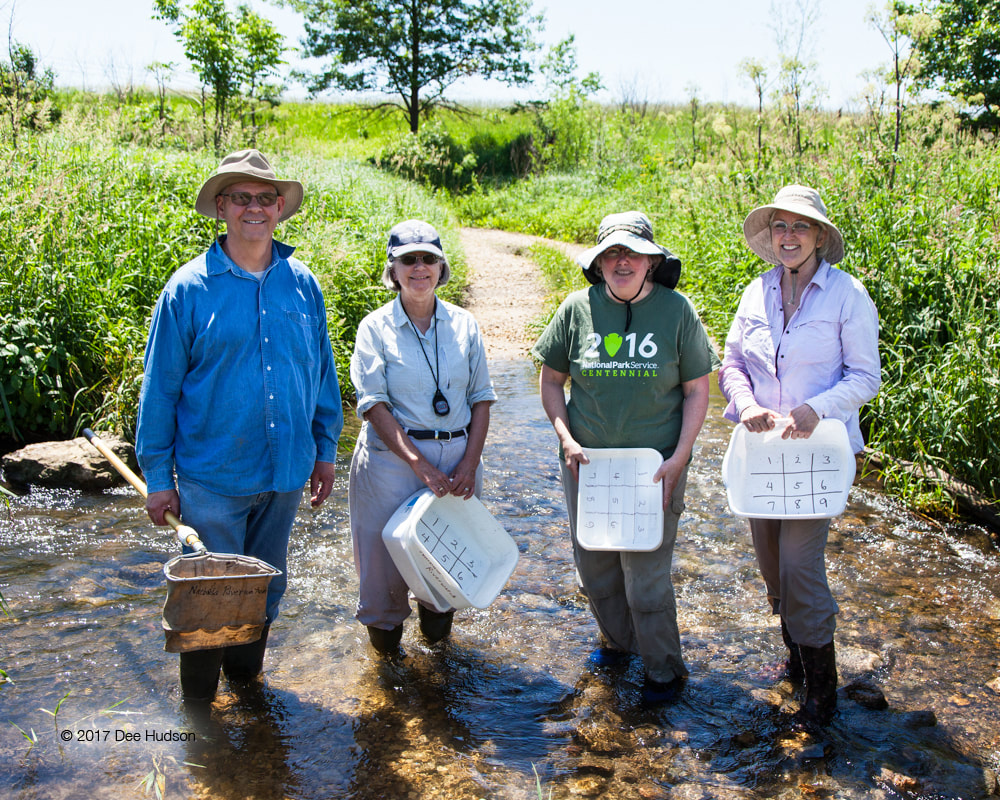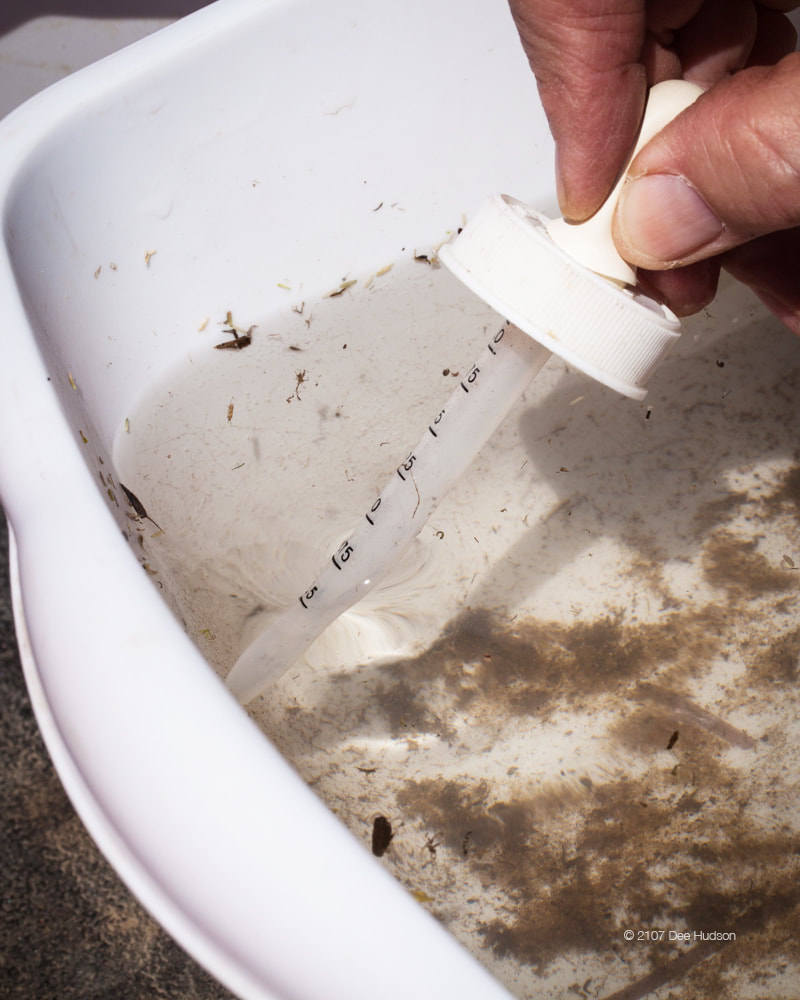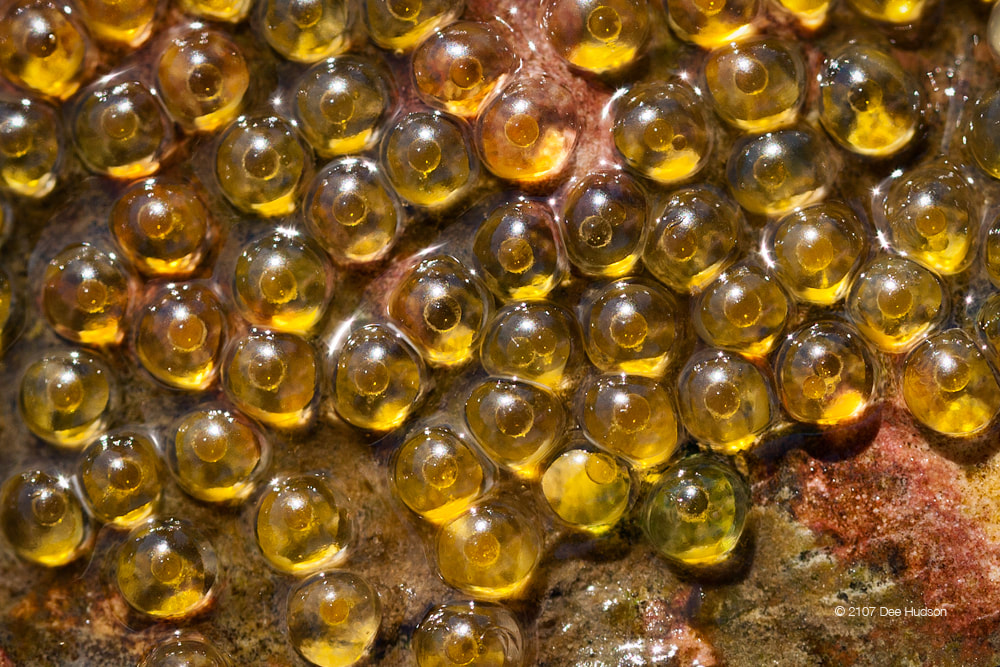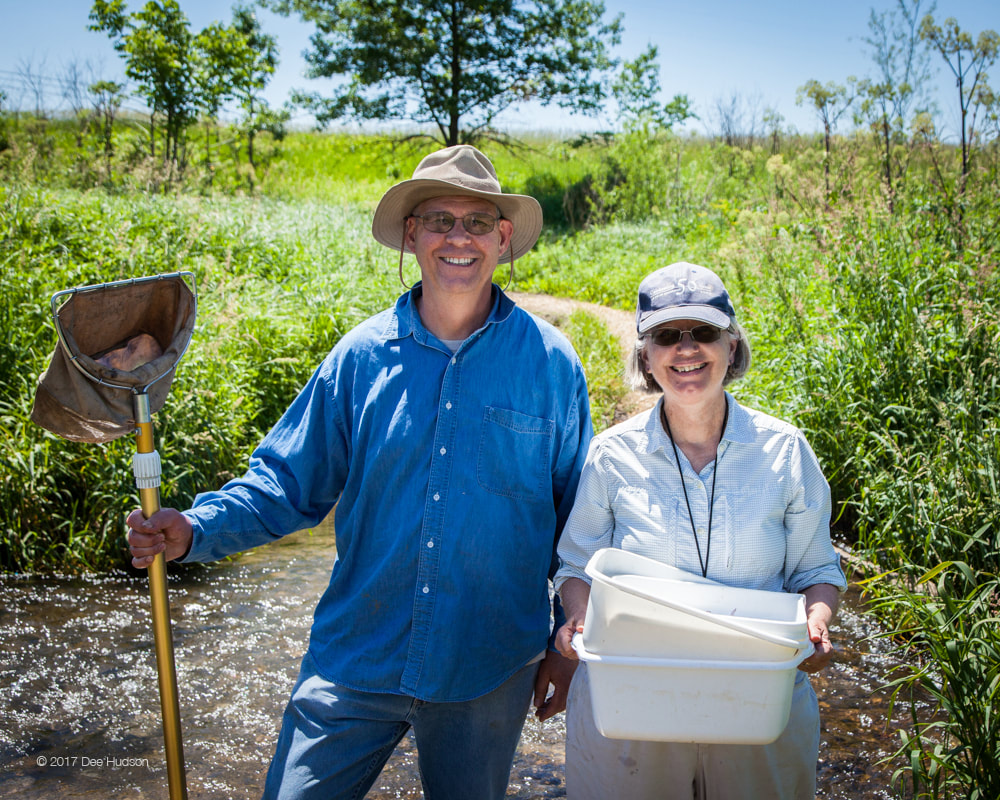|
Nachusa’s small creatures help citizen scientists monitor stream quality. Collection, identification, and a tally of macro-invertebrates from the local streams are used as an indicator of stream health. The monitoring is done through a statewide program called Illinois RiverWatch, established to help determine stream water quality throughout the state and provide a warning of potential problems. At Nachusa, the program was started in the spring of 2014 before the bison arrived, so RiverWatch is not only used to monitor stream health, but also to help identify changes due to their introduction. This is the fourth year collecting RiverWatch data in three Nachusa streams: Wade Creek, Clear Creek, and Johnny’s Creek. Illinois RiverWatch trains citizen scientist volunteers to collect, identify, and preserve important indicator species of macro-invertebrates found in streams throughout Illinois. Macro-invertebrates are invertebrates large enough to see with the naked eye. Examples include insect larva, snails, and aquatic worms. One person in the stream monitoring group is required to have the eight-hour RiverWatch training class; four hours in the classroom and four hours hands on in a stream. At Nachusa, we are fortunate to have several trained monitors and interested volunteers lead by Mary Vieregg. Others that often join in the fun are Cindy Buchholz, Mary Meier, Jan Grainger, Matt Friberg, Tim Ngo and myself. Interested people who have not been trained by RiverWatch can participate in the stream monitor with a trained lead. A site is selected and the locations are documented and approved by RiverWatch. The same site and locations are used each year, so changes from year to year and over time can be observed. At the site, the first step is to mark off the sampling area with flags 50 feet and 100 feet upstream and downstream from the selected site. Then, a map is sketched marking stream contours, significant features, and the day's sample locations. In addition, water depths, stream velocity, stream color, and temperature are recorded. Lastly, the vegetation around the stream is noted, along with the amount of shade cover; the stream bottom substrate is observed and recorded. Pictures can be taken and included with the sample data. Much of this data is recorded after the dip net hits the water in order to minimize any disturbances to the stream and the macros living in it before the collection. The preferred collecting tool is the dip net. Designed with a sturdy cloth sleeve and mesh bottom, water can easily pass through and allow macros to collect in the bottom. There are five stream habitat types that RiverWatch samples, using the dip net collecting techniques. In order of preferred use:
Once the samples are collected and placed in buckets, the challenge is to pull the fast-moving macros from their watery homes. This is done using a shallow white pan, forceps, eye droppers, and carbonated water to help slow the critters down. Once captured, the macro makes the ultimate sacrifice, as it is deposited in a vial of pure alcohol for later identification and recording. All the macros taken can be combined into one sample. Once all the macros are pulled from the shallow white pan and put in vials, the gear is packed up and the crew returns to the barn for lunch. After lunch the work of sorting, identifying and counting begins. Macro invertebrates can be seen with the naked eye, but for identification some of the key differences only become clear under a microscope. For example, mayflies fall into seven categories and key features on the gills, legs, and antennae are more easily seen through a microscope. Damsel fly larva, whether broad-winged or narrow-winged will determine their indicator number. Dragonfly larva are large and don’t need to be identified down to species, only that they are present and the number found. The process of identifying, sorting, counting is continued until the specimens are determined and recorded. The vial containing all the day's collection is labeled and sent to the RiverWatch administrator, who then forwards it on to professionals who double-check identification and the count. Feedback is then provided to the citizen scientist to help improve identification in the future. Each macro used as an indicator species is assigned a number. The lower the number, the more conservative the species and the less tolerant of pollution and other disturbances. A formula, based on the assigned number of each species, the total count of each species, and the number of organisms found, is used to determine the Macro-Invertebrate Biotic Index (MBI). The lower the MBI number, the higher the stream quality. Nachusa stream quality is good in Clear Creek and fair in Wade and Johnny’s Creek. It is too early to see a trend in improvement or degradation of water quality. An effort is made to sample the streams close to the same date each year, but an annual variance in weather conditions can account for some difference in the MBI. Only after many years of monitoring are trends likely to be seen. Following the introduction of bison, changes to the stream banks have been observed. In the sample area around Johnny's Creek, the vegetation has been eaten or trampled. Stream banks that were heavily vegetated are now bare. Near Wade Creek bison hair was found on the plants, but no disturbance was noted in the Wade Creek sample area. The changes in streams being made as a result of restoration efforts and the introduction of bison won't be measured in months or even years, but in decades and centuries. Careful observation, good science, sometimes unnerving patience, and prudent management will help restore the portions of these streams that run through Nachusa back to a functioning and evolving ecosystem.
Note: Clear Creek is outside of the bison enclosure. To volunteer for the RiverWatch program at Nachusa, contact Mary Vieregg. For more information about citizen scientist training, visit the website for Illinois RiverWatch . The blog today was written by Paul Swanson, a volunteer citizen scientist for Nachusa.
3 Comments
|
Blog CoordinatorDee Hudson
I am a nature photographer, a freelance graphic designer, and steward at Nachusa's Thelma Carpenter Prairie. I have taken photos for Nachusa since 2012. EditorJames Higby
I have been a high school French teacher, registered piano technician, and librarian. In retirement I am a volunteer historian at Lee County Historical and Genealogical Society. Categories
All
Archives
January 2024
|
CONNECT WITH US |
|














 RSS Feed
RSS Feed